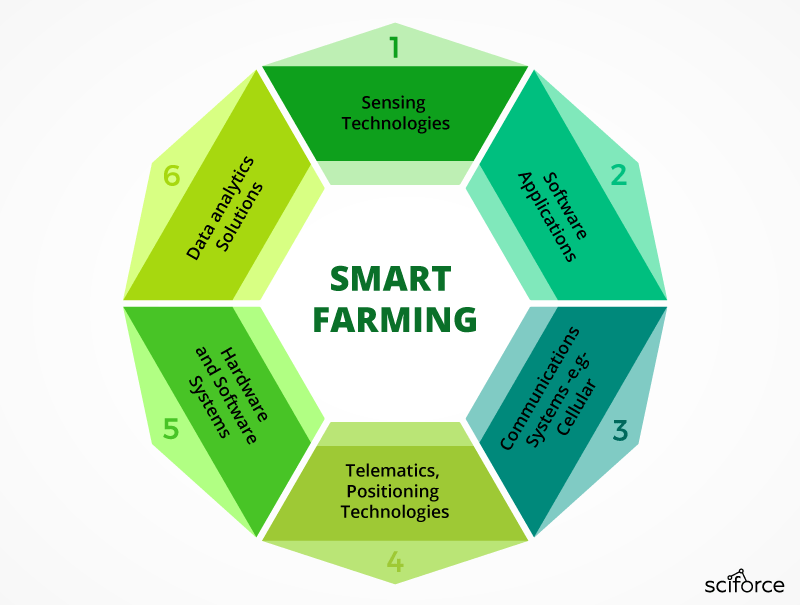The agriculture industry is undergoing immense stress. Climate change, urbanisation, resource scarcity, invasive species, and diseases are some of the difficulties facing global agriculture today. Smart farming is the application of modern Information and Communication Technologies (ICT) into agriculture, which benefits large conventional farms, small family farming exploitations, and organic farms. It also minimises the ecological footprint of farming. Water is used more efficiently, while treatments and inputs are optimized. Given that the population is estimated to increase by 35% by 2050, fostering innovations in the agricultural industry is essential if we hope to achieve food security and improved nutrition. (Spaventa. S, 2014)
Smart farming technologies
The Internet of Things (IoT), Big Data, Artificial Intelligence (AI), geo-positioning systems, and drones are some of the technologies that are being applied to agriculture, in combination with ICT. (Ranger. S, 2020) Following a cycle of Observation – Diagnostics – Decision Making – Action, these modern technologies aim to increase the quantity and quality of production as well as the optimisation in terms of the required human labour. (SmartAkis)

To put it simply, the sensors record data from the location (the crops, livestock, soil, or atmosphere), which is fed to a cloud-hosted platform, where the conditions are examined and any deficiencies or needs are identified. Once the issues (if any) are exposed to the user (and/or the machine learning components of the platform), it determines the treatment necessary. After treatment has been actioned, the cycle begins again.
Smart farming in action
For example, Tome City in Miyagi, a major rice-growing region in Japan, was facing issues as a result of an ageing population and a lack of labour force. In an effort to curb these challenges, farmers have introduced drones to maintain production. As a result, the farmers are reportedly using significantly less water and need less labour, while optimizing their spraying times.
Farmers need to double our food supply by 2050 with less and less land that is readily available each year. Data analytics can help make this happen. When farmers plough fields, sensors on the tractor and that are positioned in the field offer information about soil moisture, the amount of sun the crop is getting and the condition of the crops. Data is also used from the planning phase through to harvesting, which allows for better decision making and a more predictable outcome.
Farming in our cities
Similarly, urban agriculture is another part of the sector that is adopting technological advancements to increase productivity, profit, and sustainability. Smart urban farm startups are defying the lack of space and other resources while producing higher quality food, less waste, and a smaller carbon and water footprint. (Silicon Canal, 2019)

For instance, Bowery Farming in New Jersey grows its produce in large warehouses, using vertical, soil-free indoor farming aiming to produce pesticide-free produce using 95% less water than traditional farming.
In addition, Iron Ox uses a robotics approach to solving the issues of labour scarcity as well as the distance fresh produce currently has to be shipped. The co-founders believe that robots play an important role in the future of farming. Particularly on farms affected by the loss of younger generations to the city. (Earley. K, 2020)
In Seoul, underground vegetable farms are utilising unused metro spaces. Some 30 types of vegetables are grown hydroponically under light-emitting diodes. This method is 40 times more efficient per unit area than growing vegetables outdoors. (Hosokawa. K, 2020)

The future of farming is technologically oriented. Future farmers will work smartly, employing sustainable methods to combat hunger, climate change, resource scarcity and pollution.
“There is no sustainable business in an unsustainable world”. THRIVE strongly believes that all enterprises must strive to thrive to ensure the longevity of humanity on Earth. The THRIVE platform was created to shift the company mindset from “business as usual” to an active and progressive approach to sustainability.
Register now and measure the sustainability of your business with THRIVE.
Great Article! Thank you for sharing this very informative post, and looking forward to the latest one.
Comments are closed.